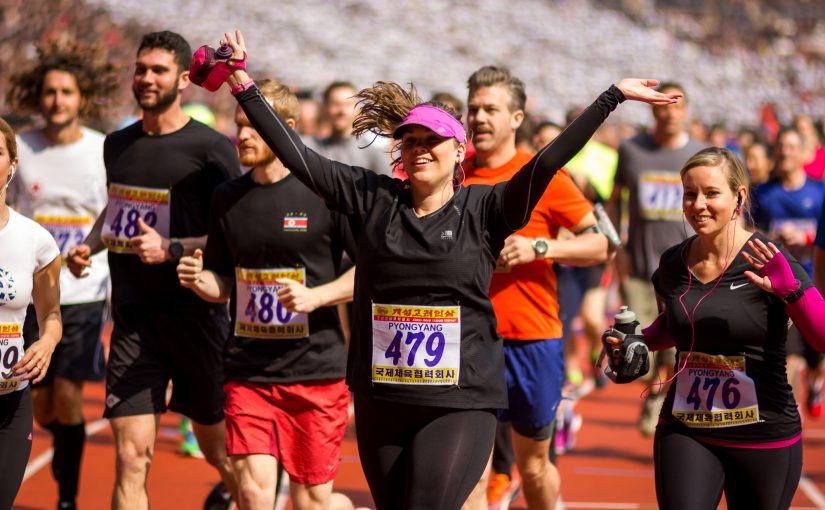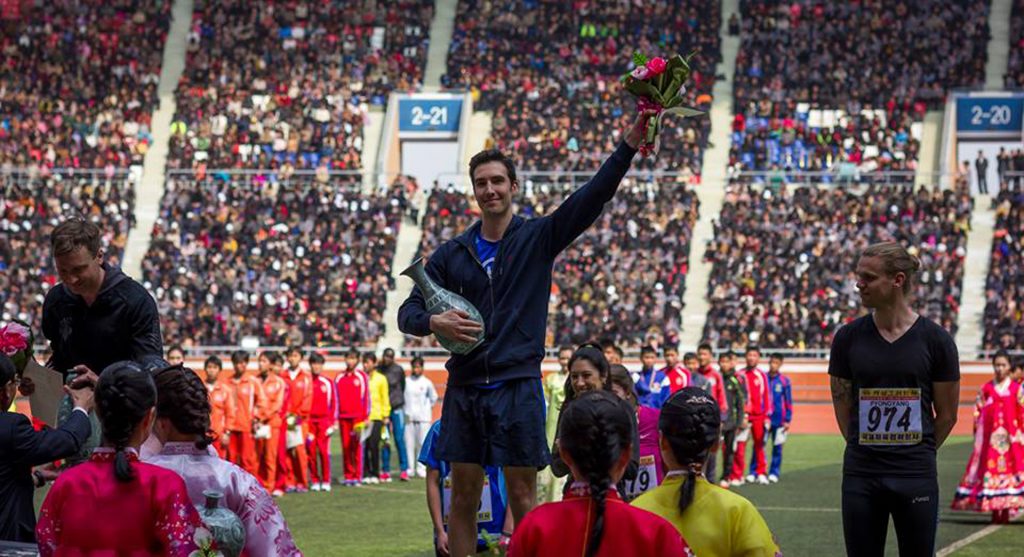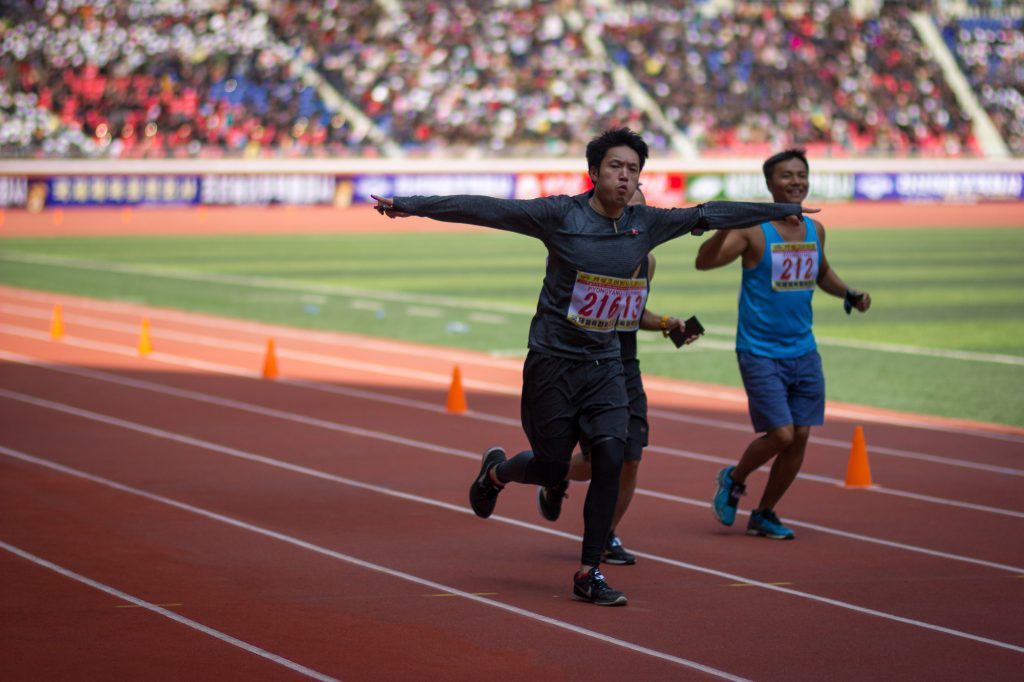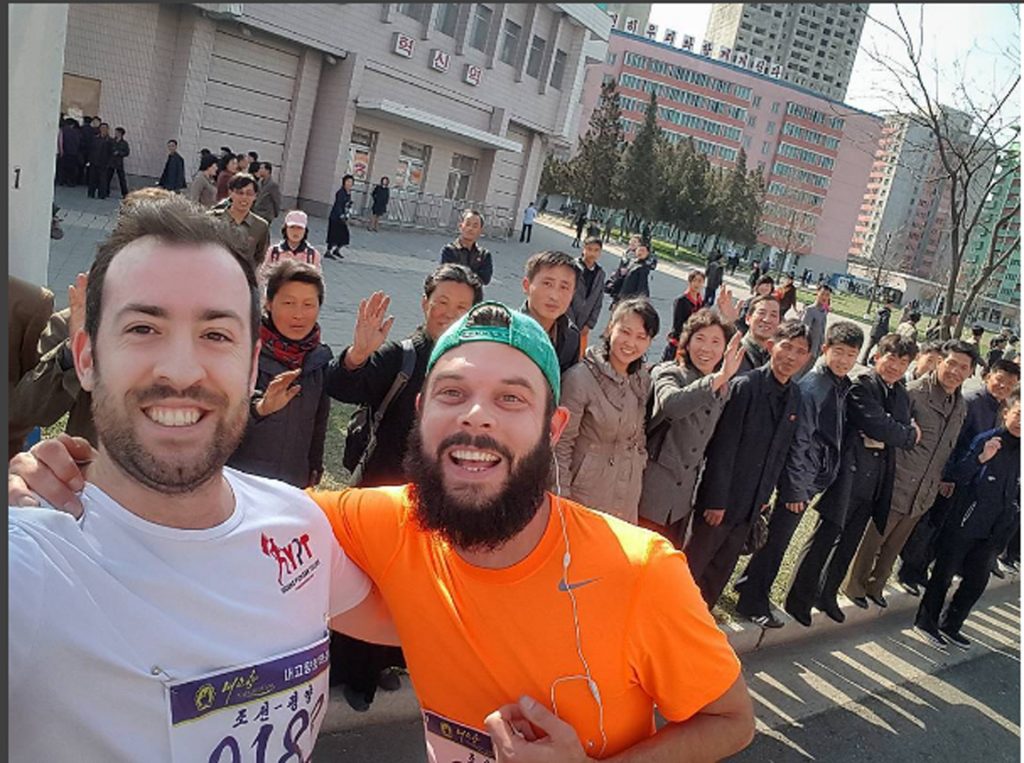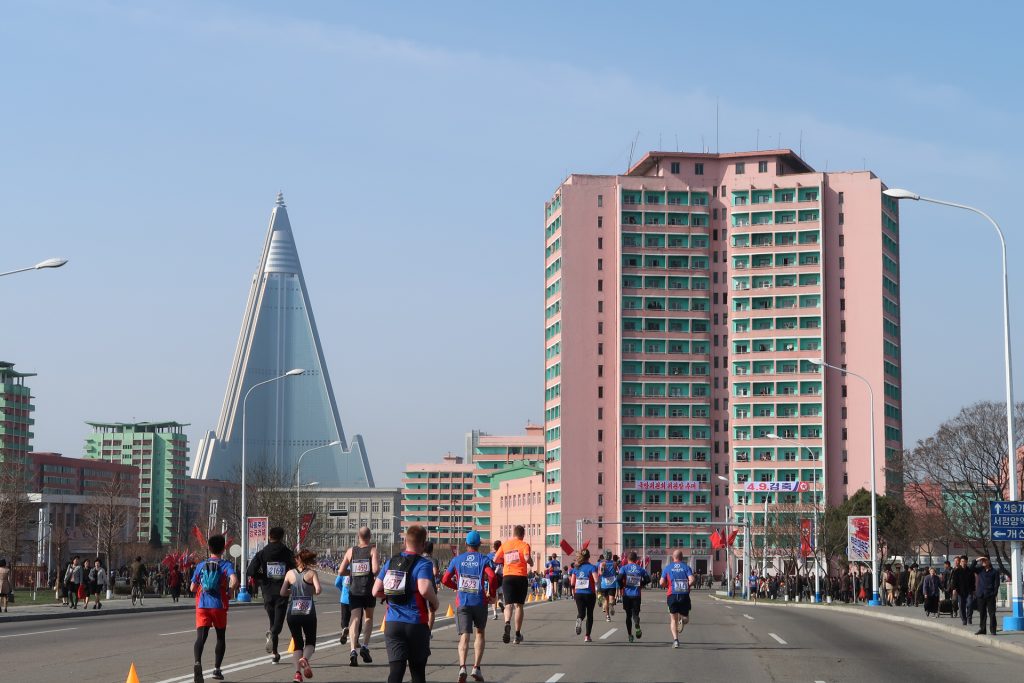The vast majority had previously taken part in marathon events – but undoubtedly there was something special about taking part in the Pyongyang marathon. After a feast of breakfast in the hotel banquet room that included everything from apples to Chinese soup to fried pork, the runners departed the Sosan Hotel and made their way by bus to the imposing Kim Il Sung Stadium. By the time the amateur runners arrived, the 50,000 capacity crowd had already begun to file in an orderly manner into the stadium to watch not just the Pyongyang marathon event, but all the subsidiary entertainment put on in celebration of the birth of President Kim Il Sung.
After around twenty minutes of warming up outside the stadium, the marathon, half marathon 10km and 5km runners were permitted to enter. As one competitor remarked to me at the time, the feeling of entering Kim Il Sung Stadium with the capacity crowd chanting, clapping, singing, and cheering was one that was not likely to ever be forgotten.
Assembling on the football pitch inside the stadium, some of the more focused runners managed to continue warm-ups but for the vast majority, simply glancing around the stadium at 50,000 North Koreans eradicated any ability to warm up and, notwithstanding the odd picture or two, allowed only for a permanent look of incredulity and disbelief.
The stewards organised all the runners into position and eventually, at 8.30 am, the starter’s gun reverberated throughout the stadium. To the cheers of the crowd, the competitors ran about half a lap, exited through the stadium tunnel, emerged back into the light, and appeared in front of one of the highest monuments in the world, the Arch of Triumph. Running past the Arch of Triumph, the runners made a sharp right up the road and headed towards the Sino-Korean Friendship Monument, built to commemorate the sacrifices made by the Chinese during the Fatherland Liberation War. Taking a right at the monument, the 700 or so competitors continued down the long Pyongyang avenue, cheered on by both those spectators lining the streets and those trying to catch a glimpse out of their apartment blocks.
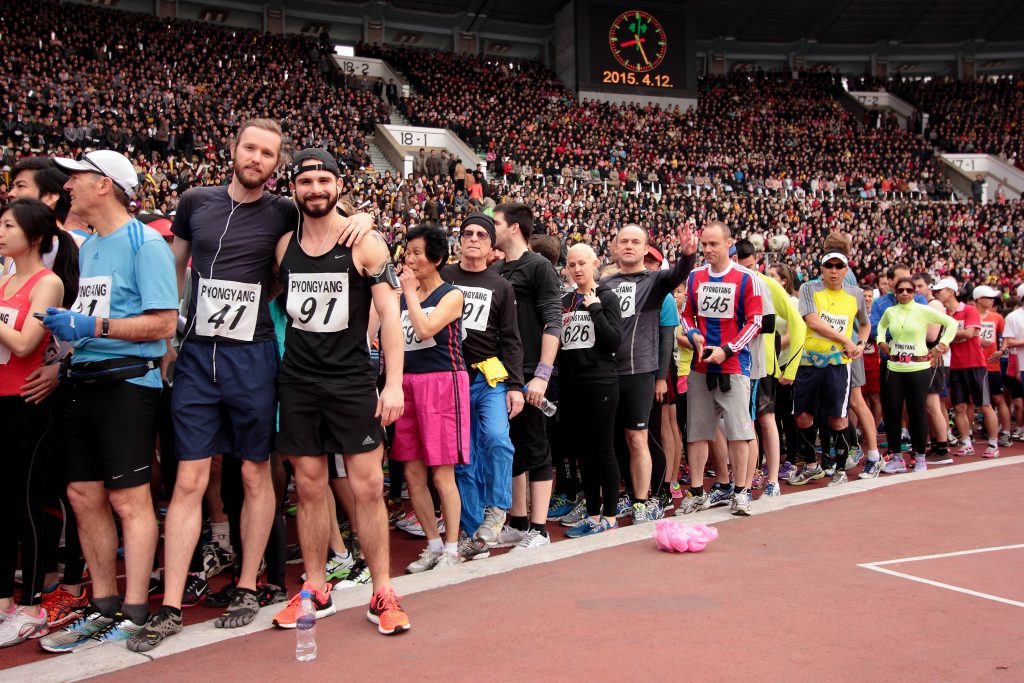
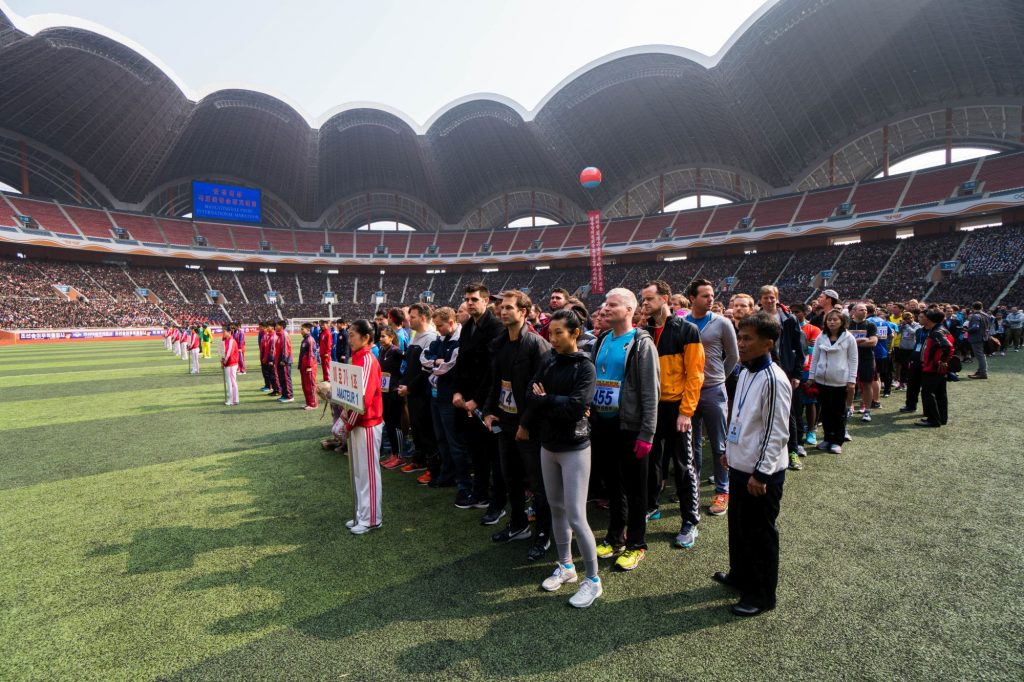
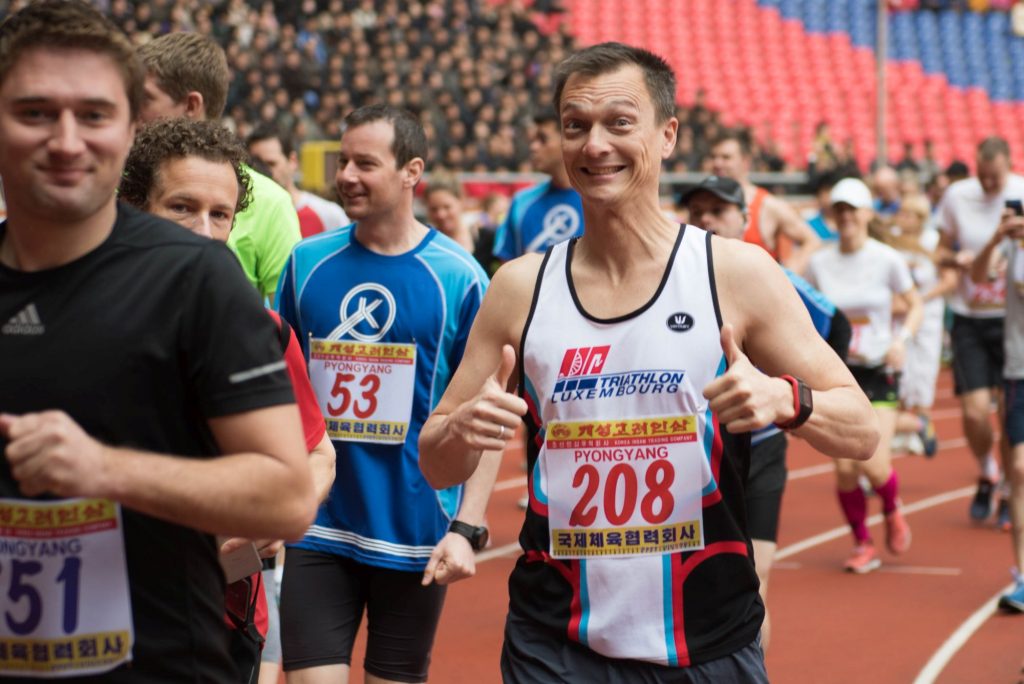
Entering the Chongryu Tunnel, the runners enjoyed a brief respite from the sun that was by this stage growing stronger and, emerging onto the Chongryu Bridge, were met with the incredible view of the largest stadium in the world, the recently refurbished May Day Stadium. Continuing along the bridge, the runners then took another right onto Juche Tower Street which marked, for everyone, the 5km mark and, for the lucky few, the half way point. Continuing down Juche Tower Street, the runners were treated to some incredible views of the Taedong River before making a sharp looping right onto Rungna Bridge where more spectators were lined to provide some much-needed encouragement and high fives.
The Rungna Tunnel was the scene for the next section of the race and once again, the competitors were thankful for some much needed relief from the elements. The emergence from the tunnel signalled the final stretch of the lap and a two kilometre run up Sungri Street was met with the welcome site of the Arch of Triumph. It was at this point that those who ran the 10km race would finish and enjoy a much deserved rest. Those brave souls who opted for the half marathon and the crazy ones who were fit enough for the full marathon would enjoy one and three more laps respectively, with both groups finishing inside Kim Il Sung Stadium.
At two hours, thirty-nine minutes, the first full marathon runner entered the stadium to huge applause from the audience. Mads Hey, traveling with Young Pioneer Tours, went onto achieve a personal best time of two hours, forty minutes and what an arena to do it in! 50,000 cheering North Korean spectators carried the young Norwegian to the finish line and for his efforts, later received a standing ovation during the medal ceremony and was awarded with a DPRK-made ceramic vase.
At 1pm, when the ceremonies were wrapped up, all that was left was for the competitors to reflect on what they had just experienced. For many, the words would not come and for most of those, they most likely still haven’t. I’ll be the first to admit that I haven’t done a very good job of describing the Pyongyang marathon and truth be told, I don’t think anyone could. The correct adjectives do not exist and any description, regardless of how well written or how fantastically elocuted will, in my opinion, always fall well short of the actual feeling of being there and taking part.
